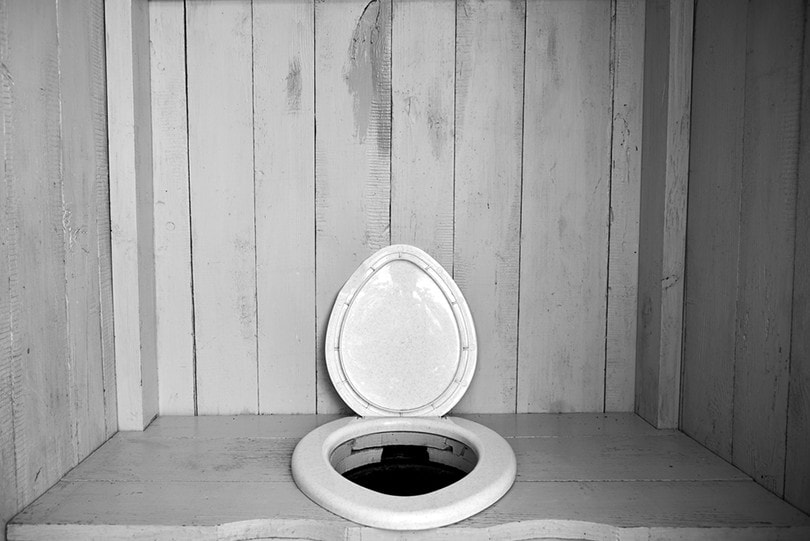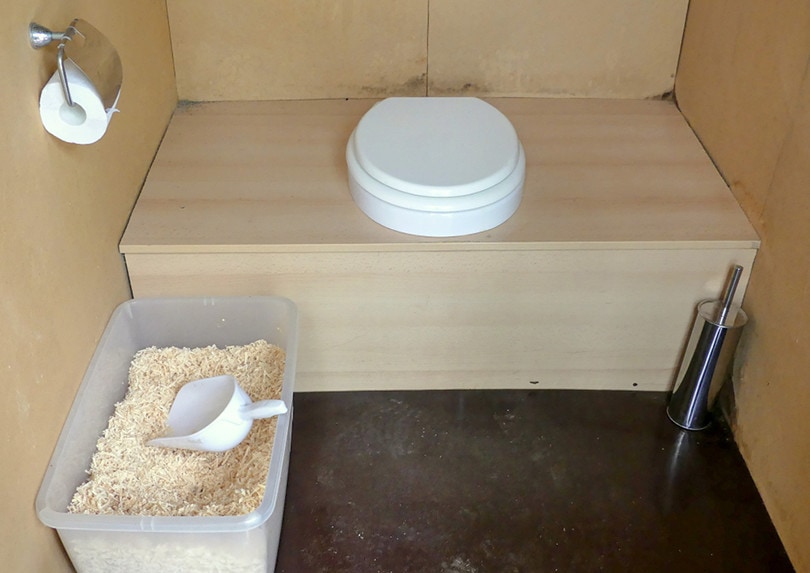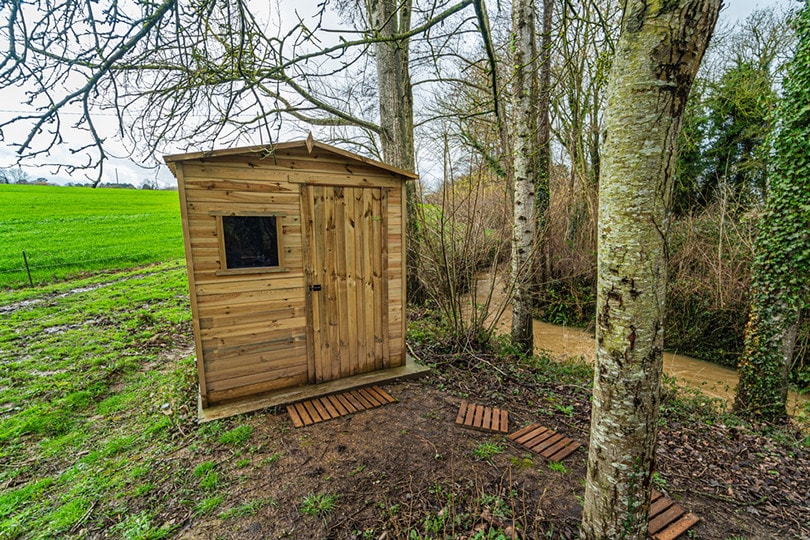How Does a Composting Toilet Work?
-
Pete Ortiz
- Last updated:

Composting toilets are becoming more and more popular because of their minimal impact on the environment. Since they rely on less water than traditional toilets, they can help save you some money while conserving resources.
If you are interested in using a composting toilet, you have to know how they work first. Composting toilets are pretty simple, but they rely on scientific processes that many people know nothing about. Luckily, understanding how a composting toilet works is simple once you have the resources and info.
What Is a Composting Toilet?

A composting toilet is an alternative to a normal toilet. It utilizes anaerobic processes to eliminate odor and naturally get rid of waste. The anaerobic process happens whenever human waste is mixed with a natural ingredient, such as sawdust, coconut coir, or peat moss, to provide a carbon-rich environment for expedient decomposition.
Although composting toilets use a different method for keeping your home sanitary, most composting toilets still function like a regular toilet—you still sit down and go to the bathroom. The waste is then taken through a hatch so that you don’t have to deal with the smell or sight. In other words, composting toilets have the same luxury as regular toilets without the downsides!
Types of Composting Toilets
There are two main types of composting toilets:
- Self-Contained: A self-contained composting toilet works as a single unit. The entire system is connected. It is often used in confined spaces or multistory homes.
- Centralized: Centralized systems utilize a large tank that is often found outside the home or under the home. The waste gets flushed into the storage tank. Centralized composting toilets are similar to traditional toilets in that the waste is flushed away into a distant chamber.
How the toilet works primarily depends on the category it falls under.
- Uses less water
- Saves money
- Better for the environment
- Provides a sanitary option when you are not connected to a sewer system
- Requires manual removal
- Not attractive
- Limited storage capacity
- Requires power
- Requires professional installment to avoid odors
 How Do They Work?
How Do They Work?

Composting toilets work by utilizing the natural decomposition process and evaporation. A little over 90% of all toilet waste is water, allowing most of the waste to be evaporated. The remaining waste is naturally broken down through an anaerobic decomposition process and turned into compost.
Composting toilets essentially work in the same way that a garden composter works. The toilet manipulates the environment to enhance decomposition in a sanitary and odor-free way. The environment is dependent on a correct balance of moisture, oxygen, heat, and organic matter.
Here is a general look at the steps involved in the process:
1. Go To The Bathroom
Most composting toilets are designed to function and work just like a regular toilet. There is a toilet seat so that you can sit down and go to the bathroom as normal. The only difference is that you do not flush water after going to the bathroom.
2. Add a Carbon-Rich Material
After you go to the bathroom, you will add a carbon-rich material that will help to break down the waste. Sawdust is one of the most common materials because it is effective and cost-efficient. Peat moss and coconut coir can be used as well.
Note that some composting toilets will do this for you whenever you flush, whereas others require you to manually add the carbon-rich material yourself.
3. Flush
The waste and carbon-rich material will be dropped through a hatch so that the waste can be broken down. From here, the exact process will vary based on the type of composting toilet you use, but the science works the same for all. The waste will be brought to a chamber in the toilet for self-contained models or it will be brought to another location in centralized models.
4. Microorganisms Eat Waste
Microorganisms naturally eat waste, both physically and biochemically. During this process, the liquid waste is converted into a nitrogen liquid, which evaporates much faster. Other waste is broken down into compostable material.
The microorganisms, matched with the correct temperature and oxygenation, allow for the decomposition to happen much faster inside the chamber than it would out in the open. Once the system is finished, it can be removed and used as compost for your garden.
Related Read: How to Use a Composting Toilet: Step-by-Step Guide
Is a Composting Toilet Right for Me?

A composting toilet may be right for you if you are looking for an alternative that uses less water. Likewise, a composting toilet might be an option for individuals who do not have access to conventional plumbing or sewage systems. These reasons make composting toilets a good idea for individuals who want to help the planet.
However, there are some downsides to using a composting toilet. For example, you might have to manually remove waste, you will likely need a greywater system, and you may need some sort of power source. You will want to compare the advantages and disadvantages to decide which side you lean.
For many people, the advantages outweigh the disadvantages. Although it is true that there are some downsides, the advantages make the hassle associated with the composting toilet worth it.
 Final Thoughts
Final Thoughts
In short, composting toilets work by speeding up the natural decomposition process. The chamber provides just the right environment for the waste to be decomposed and composted in a sanitary, safe, and efficient manner without the need for excess water.
Although composting toilets were once thought of as a tree hugger’s amenity, many modern compostable toilets provide all of the same luxury and benefits of a regular toilet, all while aiding the environment. You will want to consider both the pros and cons of the compostable toilet before deciding if it is right for you.
Featured Image Credit: osobystist, Shutterstock
Contents


 How Do They Work?
How Do They Work?